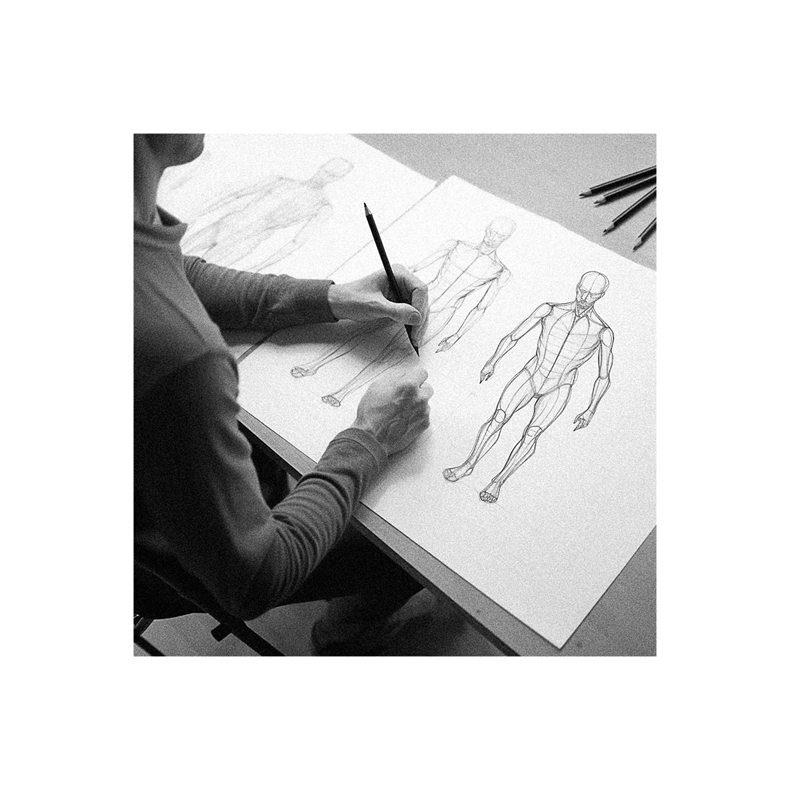You might think drawing anatomy is as simple as doodling a stick figure, but there’s far more to it. Welcome to the fascinating world of artistic anatomy! It’s about accurately representing the human body and understanding and depicting muscles in 3D to bring your figures to life.
Let’s start by stripping back the complexities and beginning with basic volumes – spheres, boxes, cylinders. Think of them as your building blocks for structure and contours. But don’t expect an anatomy book to be your all-knowing guide; it can show you what’s under the skin, yet it won’t help you understand the three-dimensional shape of muscles or how they move.
Remember, proportions and anatomy should support gesture drawing, while adding style through proportional exaggeration can give your art a unique touch.
Ready? Let’s dive into this beginner’s guide to artistic anatomy, where we’ll explore these concepts further!
What is Artistic Anatomy?
So, you’re keen on learning about artistic anatomy, huh?
It’s all about understanding the human body’s structure and how to represent it realistically in your drawings – think of it as creating a believable 3D map of muscles and bones on your canvas!
Don’t get overwhelmed by the complexity; every master artist started where you are now.
Establish volumes with basic shapes like spheres, boxes, and cylinders.
Use an anatomy book for reference, but remember, it’s not just about replicating what you see.
You’ve got to understand each muscle in 3D and how they interact to create movement.
That’s the beauty of artistic anatomy – it breathes life into your figures, making them more than just flat images.
Welcome to this exciting journey!
Importance of Understanding Muscles
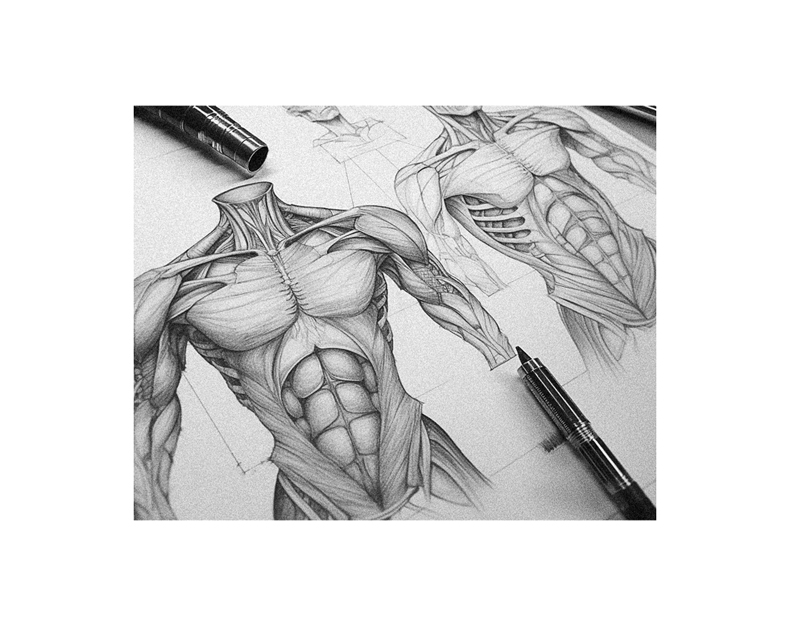
It’s crucial to grasp the nuances of muscle structure in figure drawing – surprisingly, studies show that only 23% of aspiring artists pay attention to this detail. Understanding muscles can take your art from flat and uninspired to dynamic and realistic. Here are a few reasons why you should prioritize learning about muscles:
- Muscles add realism: They’re not just lines on a body; they give your figures depth and dimension.
- They enhance movement: Properly drawn muscles can significantly improve action credibility in your drawings.
- Each muscle is unique: Acknowledging their distinctive shapes enriches your knowledge base, enabling you to adapt and modify them.
- Muscles convey personality: A ripped torso suggests strength, while softer curves might imply gentleness or vulnerability.
Remember, don’t just copy what you see. Understand it, recreate it using your anatomy knowledge, and watch your art transform!
Starting with Basic Volumes
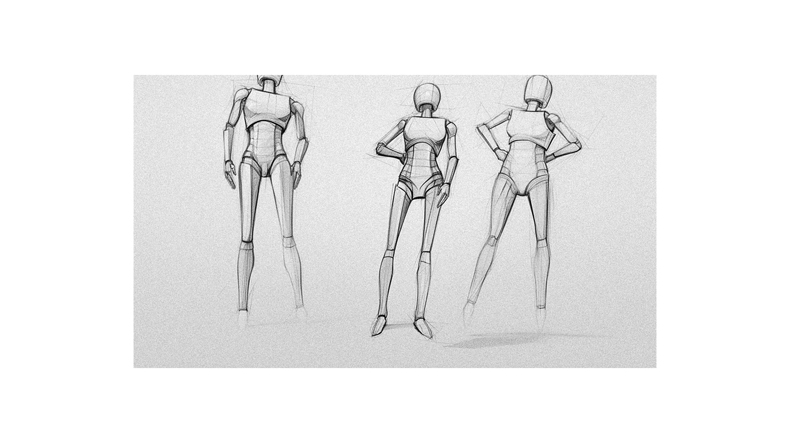
Let’s dive right into the heart of figure drawing – starting with basic volumes. Think spheres, boxes, and cylinders. They’re your best friends when you’re beginning to sketch a figure.
You don’t want to jump straight into copying contours, as it can result in a flat-looking drawing that lacks depth. Use your anatomy book to understand what’s beneath the surface. But remember, each muscle is three-dimensional. Visualize and draw them as such to avoid overemphasizing muscles, which should add realism but not be the focal point.
Try gesture drawing first to maintain focus on action before diving deeper into details. Each subject is unique, so adapt your shapes accordingly and avoid making every figure look alike.
Tailoring these fundamentals will help you draw more realistic figures with mass and volume.
Building Structure and Contours
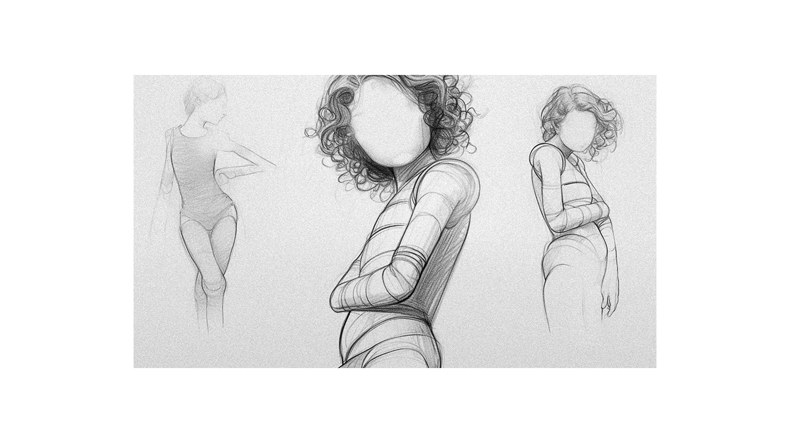
After mastering the basics of volumes, your next challenge is to build structure and contours, a task that may feel as intimidating as scaling a mountain yet just as rewarding at the summit.
It’s easy to slip into copying contours first, but this can lead to flat-looking drawings. Instead, use your anatomy book to understand what lies beneath the surface, visualizing each muscle in 3D. Don’t overemphasize muscles; they should add realism but not be the focal point. Using them to support action and convey personality will make your figures look more lifelike.
Remember that proportions and anatomy must enhance your underlying gesture drawing – exaggerating intentionally can add style. You’ll create realistic figures full of mass and movement with practice and patience.
Using Anatomy Book as Reference
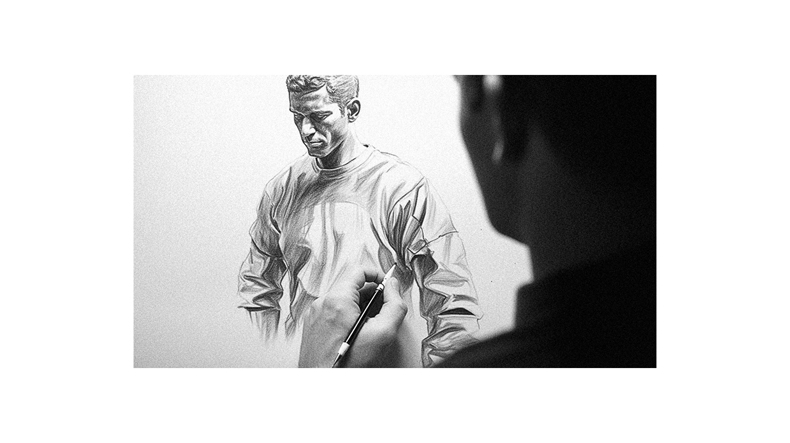
Using an anatomy book as a reference is invaluable, yet you must remember to navigate it with a 3D perspective. This allows the essence of each muscle to leap off the page and add depth to your creations. It’s not just about copying what you see but understanding and recreating it on paper using your knowledge of anatomy.
Beware of overemphasizing muscles; they should augment realism but not be the focal point. Use them instead to reinforce action and convey personality. Adapt shapes based on the specific figure being drawn – don’t approach every figure with the same set of shapes.
Remember, proportions and anatomy should support your underlying gesture drawing. Your skill in translating 3D anatomy onto a flat surface will give life and volume to your figures.
Balancing Realism and Focal Point
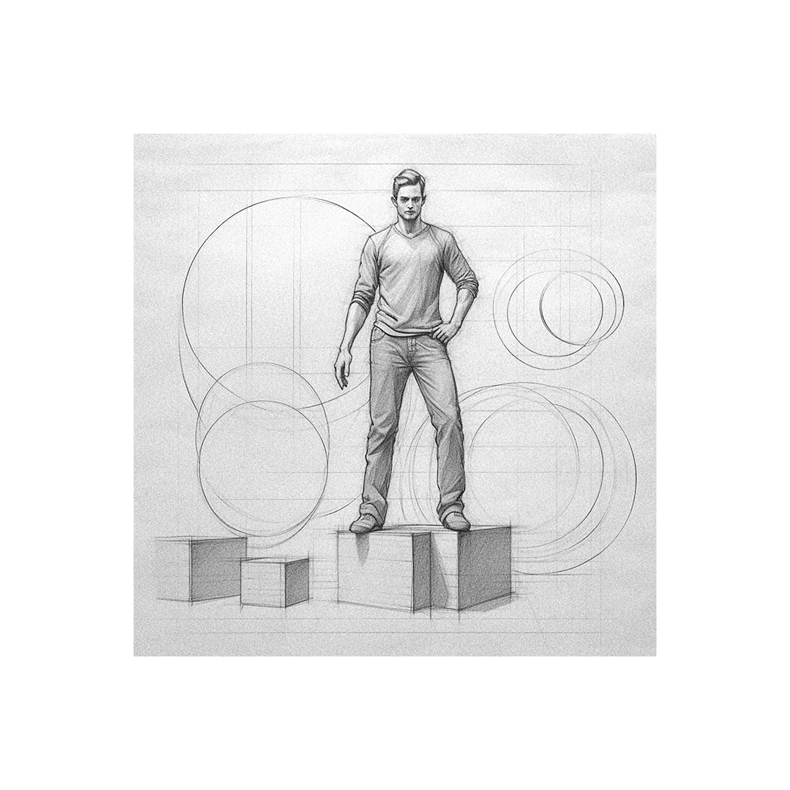
Having gotten a handle on using an anatomy book as a reference, let’s shift gears. Drawing anatomy isn’t just about precision – it’s also about balance.
One common pitfall beginner artists often fall into is overemphasizing muscles in their drawings. Sure, you want your figures to look realistic and detailed, but remember, muscles shouldn’t be the focal point of your artwork. Instead, they’re there to reinforce the action and convey personality.
If you spend too much time emphasizing each muscle, you risk losing sight of the bigger picture – literally! So keep things balanced; use what you’ve learned about anatomy to enhance movement and character in your figures while ensuring they don’t overshadow other essential elements of your art piece.
Muscles to Convey Action and Personality
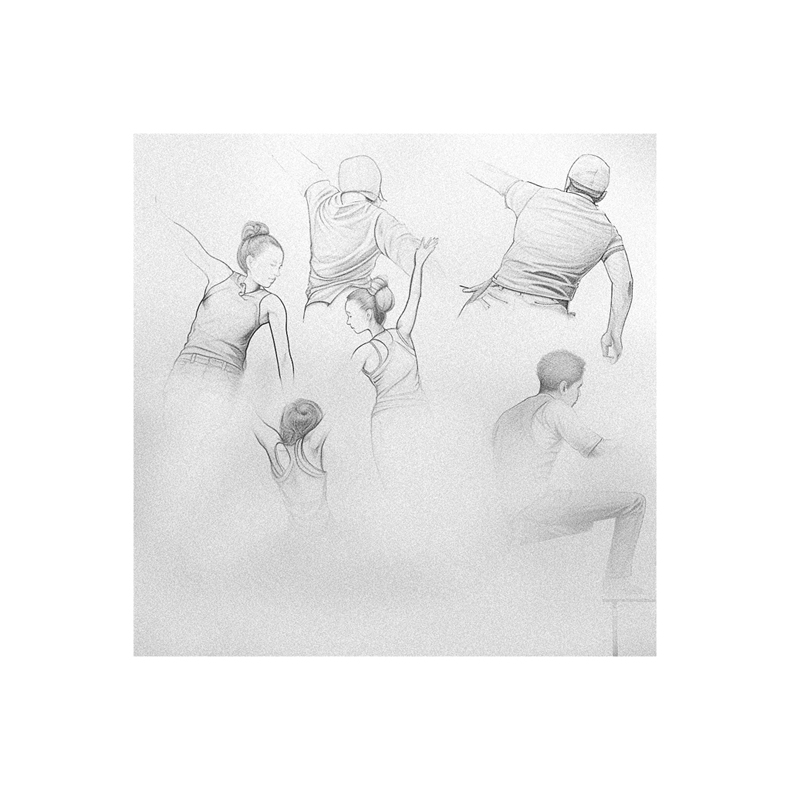
Let’s dive deeper, shall we? Understanding how to use muscles in your sketches effectively can elevate your art. It adds a dynamic element of action and infuses your figures with personality. Remember, you’re not just drawing static shapes; you’re breathing life into your figures.
Don’t overemphasize the muscles, though. They should subtly hint at the figure’s movements without becoming the focal point. You’ll want to start with a gesture drawing that captures the essence of the action before layering on anatomy. This allows for more realistic portrayals of movement.
Adapt shapes to fit each unique subject, avoiding a one-size-fits-all approach. Observe and understand their unique build before trying to translate it onto paper using your 3D knowledge of anatomy. It’s this adaptation that will help convey the figure’s personality.
Gesture Drawing for Dynamic Figures
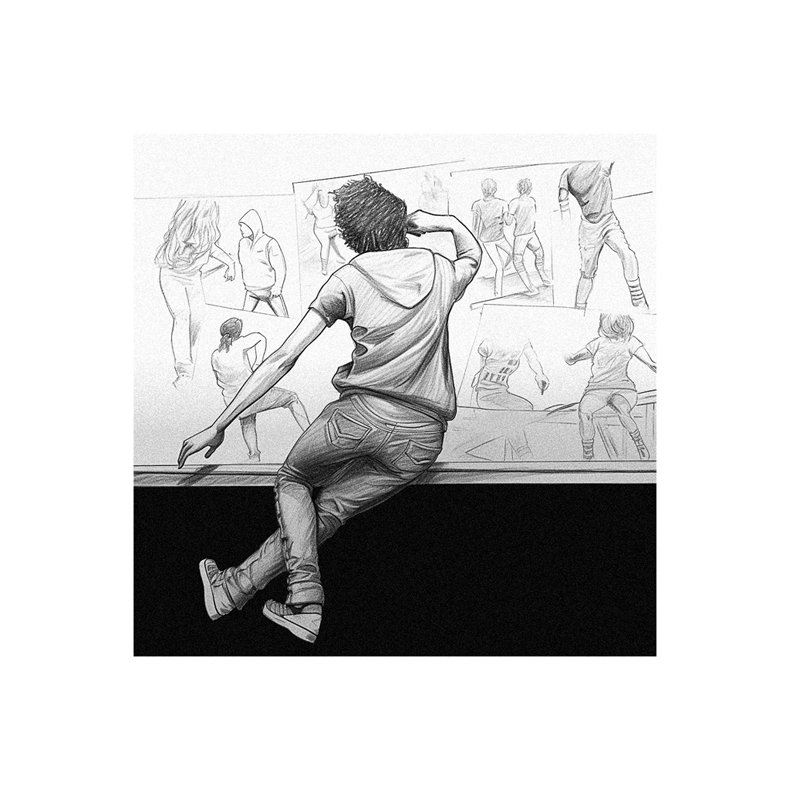
You’re on your way to creating dynamic figures that pulse with life and movement, and it all starts with mastering the art of gesture drawing. This technique helps you capture the essence of a figure’s action in quick, expressive lines. It’s not about precision or detail; think of it more as a brief sketch that captures the motion and posture of your subject.
Start each drawing session with gesture drawings to maintain focus on action. Over time, these loose sketches can be a springboard to more detailed work. But don’t forget: while proportions and anatomy are important, they should support your underlying gesture drawing.
Remember, exaggerating some proportions can add style to your figure—it’s all about finding balance!
Adapting Shapes to Subject
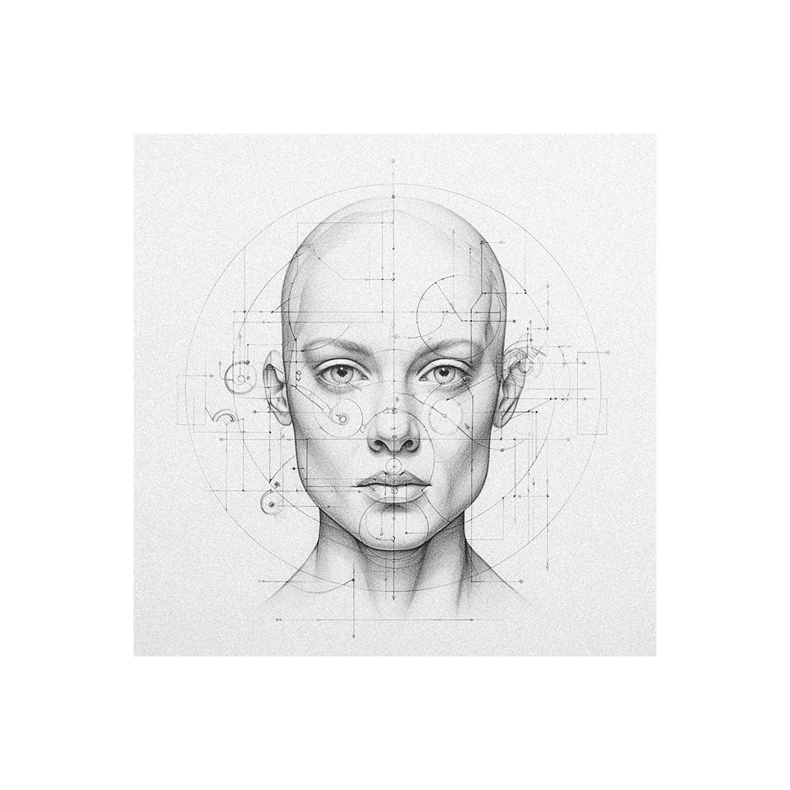
Drawing isn’t a one-size-fits-all activity, so when you sketch different figures, you must adapt your shapes to fit your subject. Remember that each person has unique proportions and muscle structure, so don’t approach every figure with the same shapes.
Here are some tips for adapting your shapes:
- Observe your subject closely: Consider their distinct features and their differences from standard anatomy guides.
- Stretch or compress primary volumes: Modify spheres, boxes, and cylinders to capture the uniqueness of your subject.
- Get creative with muscle depiction: Don’t overemphasize muscles; use them subtly to reinforce action and personality.
- Practice regularly: The more you draw varied subjects, the better you’ll be at adapting shapes to fit their unique build.
Recreating 3D Knowledge on Page
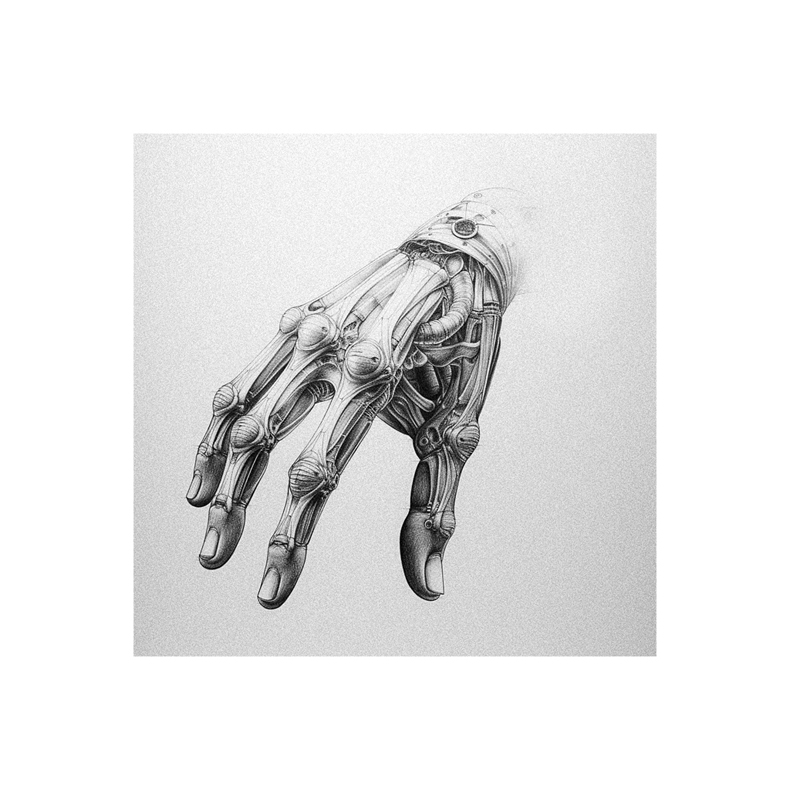
Imagine the power in your hands when you can transfer your three-dimensional understanding of muscles and anatomy onto a two-dimensional page, making your drawings come alive with realism and depth.
This involves more than just copying what you see. Instead, it’s about recreating it on the page using your knowledge of 3D anatomy. It’ll require focus and practice, but don’t worry!
Start by observing shapes, contours, forms, and volume. Then try to visualize these elements in 3D before putting pen to paper. Remember that lines are boundaries between forms; they should suggest depth rather than lie flat on the page.
With time, this skill will become second nature, allowing you to draw figures with mass and volume effortlessly.
Proportions and Anatomy for Realism
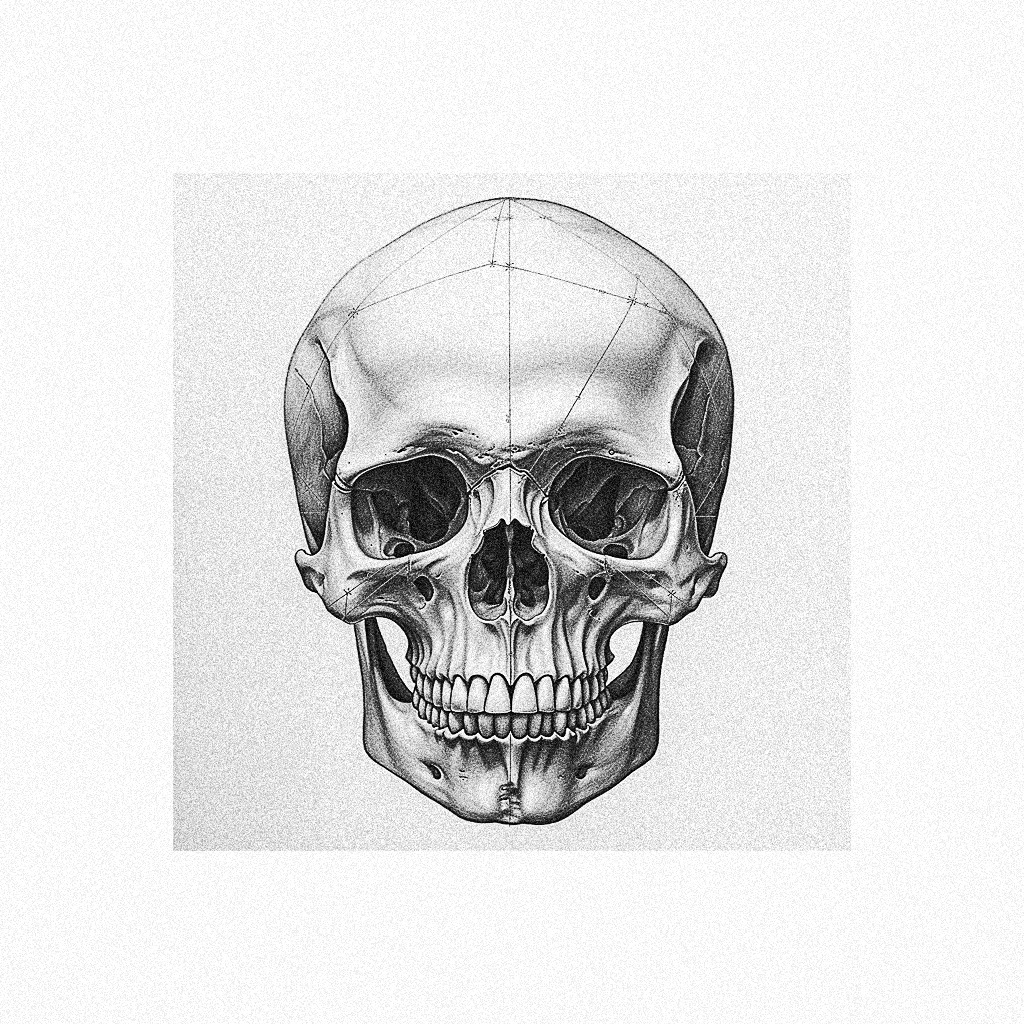
When striving for realism in your figure drawings, it’s critical to nail down proportions and anatomy. A study found that viewers are more likely to perceive a drawing as realistic when the artist accurately represents these two elements.
Don’t simply copy what you see; use your understanding of 3D anatomy to recreate the subject on the page. For example, if you exaggerate proportions for style purposes, ensure it aligns with anatomical correctness.
Remember that your figures should have mass and volume – they aren’t flat shapes! Overemphasizing muscles can detract from this realism; instead, use them subtly to enhance movement and personality. Your skill in drawing muscles will enable you to adapt shapes effectively, adding depth and believability to your figures.
Adding Style through Proportional Exaggeration
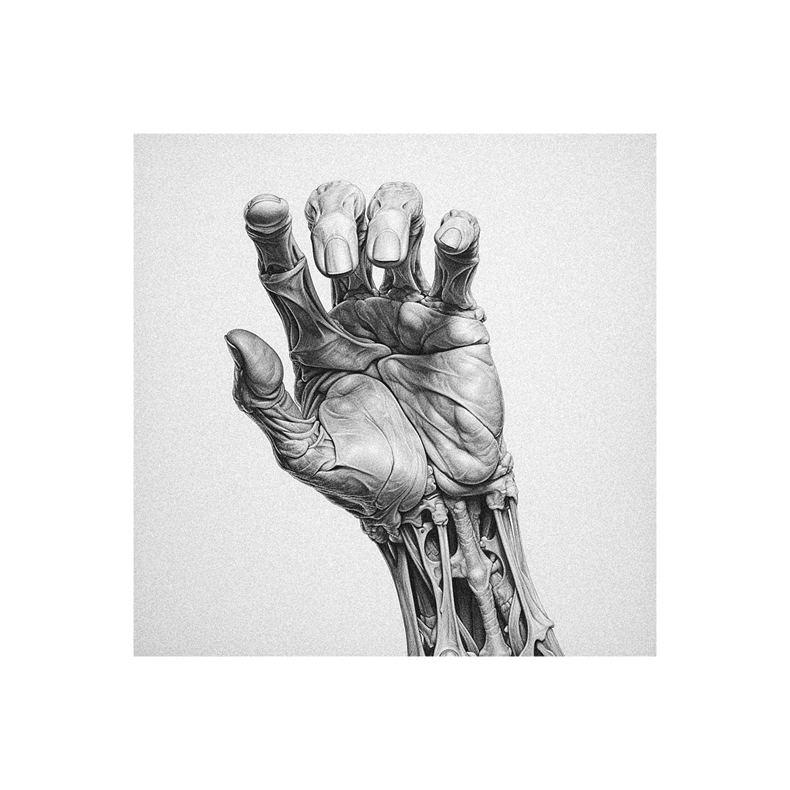
After mastering the basics of proportions and anatomy, you might feel ready to take your drawings to the next level. Let’s traverse a terrain where creativity meets realism – proportional exaggeration. Don’t shy away from bending reality in your artwork.
Exaggerating proportions can add style and uniqueness to your figure drawings. It can breathe life into a static pose or emphasize certain personality traits of your figures. But remember, it’s crucial to maintain balance while doing this. An overly exaggerated figure might look cartoonish unless that’s the effect you’re aiming for.
Use this technique subtly and thoughtfully to add depth and character to your figures without losing their anatomical correctness. Play around with it until you find what works best for your artistic vision!
Follow us on Pinterest for more tips, tutorials, and artist reviews!

